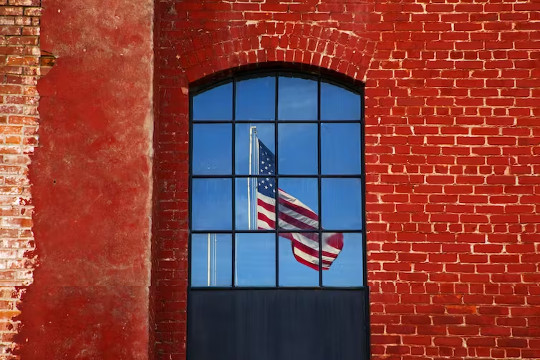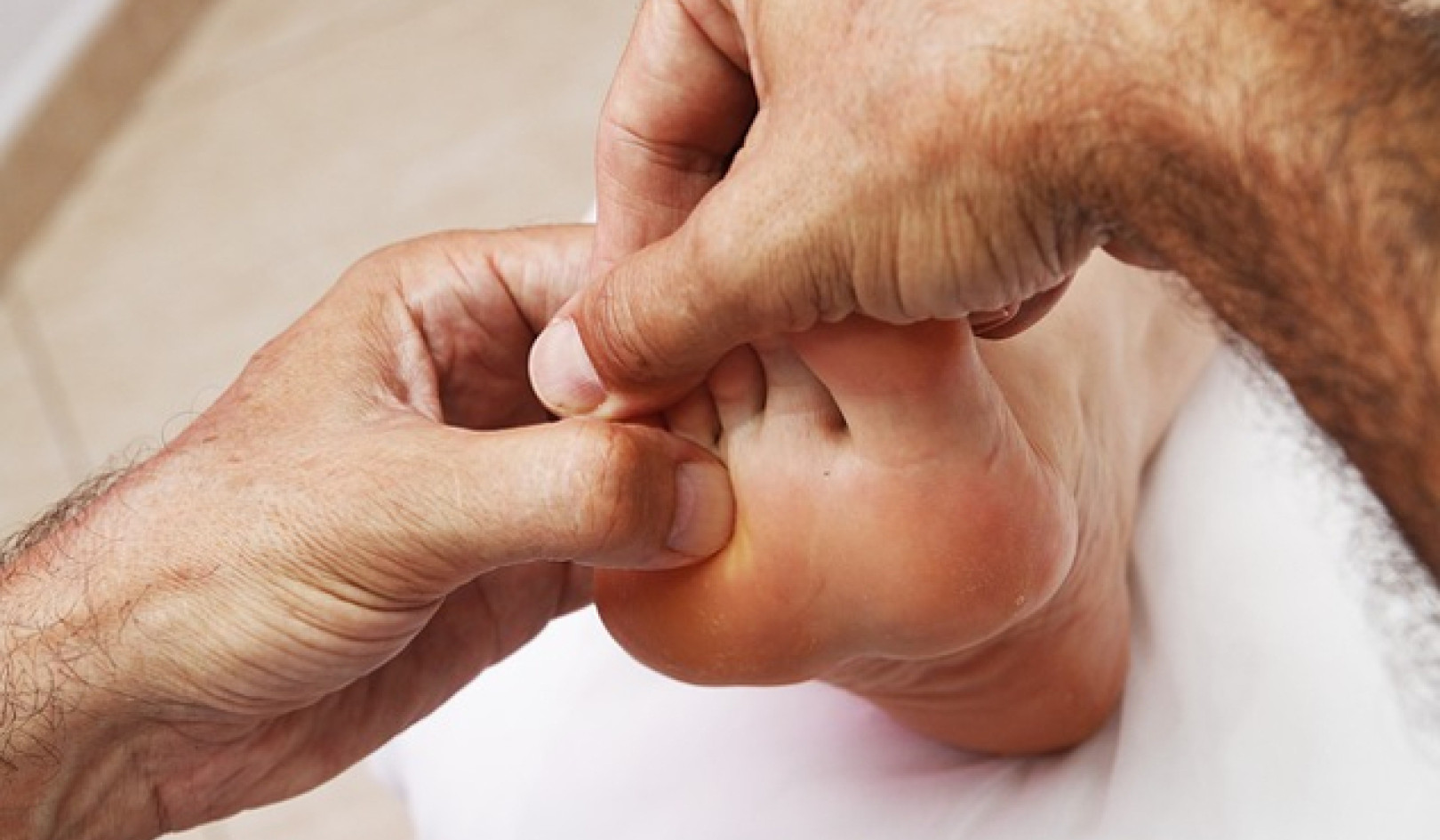
While blue, Democratic states are becoming bluer, red, Republican-leaning states are becoming more conservative. Matt Champlin
I am a scholar who studies the intersection between politics, media and psychology. I think it is important to note that people are largely migrating to places with lower life expectancies.
The United States is an increasingly polarized country when it comes to politics – but one thing that almost all people want is to live a long, healthy life.
More and more Americans are moving from Democratic-leaning blue states to Republican-voting red ones, and one of the effects of this change is that they are relocating to places with lower life expectancy.
Idaho, Montana and Florida, all red states, had the greatest population growth among U.S. states between 2020 and 2022. Meanwhile, New York and Illinois, both blue states, and Louisiana, a red state, suffered the biggest population losses. California, another blue state, has experienced significant recent population loss as well.
One key reason for this migration is the high cost of living in places like New York and California, compared with the lower cost of living in red states such as Georgia or Indiana.
Understanding demographics
There is a large difference in expected life spans for people living in certain states, according to U.S. Centers for Disease Control and Prevention data.
For instance, people born in New York and California – two of the richest states in the country, which largely vote Democratic – have a life expectancy of 77.7 and 79 years, respectively. But people in Mississippi and Louisiana – two of the poorest states, which tend to vote Republican – live, on average, until they are 71.9 and 73.1 years old.
People who live in Republican-leaning states tend to have less money, worse health conditions, higher rates of gun-related deaths and lower levels of education than people living in Democratic states.
On average, people in red states have higher rates of poverty than residents of blue states.
Poverty is an indicator for life expectancies in the U.S. – the poorer someone is, the more likely to die younger.
But there are likely other issues at play in people in red states’ having lower life spans.
Health differences
Research in 2020 showed that Americans in blue states tend to live longer than people in red states, primarily because of state policies on everything from seat belt laws to abortion laws. That research also identified health policies as a major factor.
People in blue states also tend to have higher rates of health insurance than people in red states.
Moreover, when looking at the rates of people who are diagnosed with cancer in each state, it is clear that people in red states are generally less healthy than people in blue ones. Red-state residents are also more likely to die from heart disease than people in blue states.
But health rates vary greatly across racial and ethnic groups. Black and Hispanic people are far more likely than white and Asian people in the U.S. to not have access to quality affordable health care, regardless of their state of residence.
And Black people remain more likely than white people to have high blood pressure and to die from heart disease, among other health conditions.
Lower education levels
Another key factor in this life span trend is that people in red states have lower levels of education than people in blue states.
This matters, since some recent research has shown that education levels are the best predictor of a person’s life span for a variety of complex, interconnected reasons, including an increased likelihood that receiving a higher education will lead to a boost in income.
Experts also often consider race and ethnicity another major factor, in part because of structural inequalities facing people of color that may place access to quality affordable education out of reach, for example.
Lack of education may be the most direct reason for lower incomes and shorter lives – but it is not clear if attaining a higher level of education makes people wealthier, or if people who are born into wealth receive more and better education.
Are people moving to die young?
There are other reasons that factor into the complex question of life expectancy, and discrepancies in longevity across states.
One reason identified by the Centers for Disease Control and Prevention, for example, is that there are more gun deaths – by homicide and suicide – in red states than blue states.
People are moving to different states in the U.S. for a variety of reasons – including, in some cases, political ideologies. While blue ZIP codes have been found to be getting bluer, red ones are becoming even more red.
But it is important to keep in mind that data on life spans and health are simply averages, and so there can be a high variation within particular locations.
Thee are people in red and blue states who defy these statistics – many people living long lives in poor red states, and people dying younger in rich blue ones.
Still, the overall trends are clear. People living in blue states – by and large – tend to live longer, healthier and wealthier lives.![]()
About The Author
Robert Samuels, Continuing Lecturer in Writing, University of California, Santa Barbara
This article is republished from The Conversation under a Creative Commons license. Read the original article.
Recommended books:
Capital in the Twenty-First Century
by Thomas Piketty. (Translated by Arthur Goldhammer)
 In Capital in the Twenty-First Century, Thomas Piketty analyzes a unique collection of data from twenty countries, ranging as far back as the eighteenth century, to uncover key economic and social patterns. But economic trends are not acts of God. Political action has curbed dangerous inequalities in the past, says Thomas Piketty, and may do so again. A work of extraordinary ambition, originality, and rigor, Capital in the Twenty-First Century reorients our understanding of economic history and confronts us with sobering lessons for today. His findings will transform debate and set the agenda for the next generation of thought about wealth and inequality.
In Capital in the Twenty-First Century, Thomas Piketty analyzes a unique collection of data from twenty countries, ranging as far back as the eighteenth century, to uncover key economic and social patterns. But economic trends are not acts of God. Political action has curbed dangerous inequalities in the past, says Thomas Piketty, and may do so again. A work of extraordinary ambition, originality, and rigor, Capital in the Twenty-First Century reorients our understanding of economic history and confronts us with sobering lessons for today. His findings will transform debate and set the agenda for the next generation of thought about wealth and inequality.
Click here for more info and/or to order this book on Amazon.
Nature's Fortune: How Business and Society Thrive by Investing in Nature
by Mark R. Tercek and Jonathan S. Adams.
 What is nature worth? The answer to this question—which traditionally has been framed in environmental terms—is revolutionizing the way we do business. In Nature’s Fortune, Mark Tercek, CEO of The Nature Conservancy and former investment banker, and science writer Jonathan Adams argue that nature is not only the foundation of human well-being, but also the smartest commercial investment any business or government can make. The forests, floodplains, and oyster reefs often seen simply as raw materials or as obstacles to be cleared in the name of progress are, in fact as important to our future prosperity as technology or law or business innovation. Nature’s Fortune offers an essential guide to the world’s economic—and environmental—well-being.
What is nature worth? The answer to this question—which traditionally has been framed in environmental terms—is revolutionizing the way we do business. In Nature’s Fortune, Mark Tercek, CEO of The Nature Conservancy and former investment banker, and science writer Jonathan Adams argue that nature is not only the foundation of human well-being, but also the smartest commercial investment any business or government can make. The forests, floodplains, and oyster reefs often seen simply as raw materials or as obstacles to be cleared in the name of progress are, in fact as important to our future prosperity as technology or law or business innovation. Nature’s Fortune offers an essential guide to the world’s economic—and environmental—well-being.
Click here for more info and/or to order this book on Amazon.
Beyond Outrage: What has gone wrong with our economy and our democracy, and how to fix it -- by Robert B. Reich
 In this timely book, Robert B. Reich argues that nothing good happens in Washington unless citizens are energized and organized to make sure Washington acts in the public good. The first step is to see the big picture. Beyond Outrage connects the dots, showing why the increasing share of income and wealth going to the top has hobbled jobs and growth for everyone else, undermining our democracy; caused Americans to become increasingly cynical about public life; and turned many Americans against one another. He also explains why the proposals of the “regressive right” are dead wrong and provides a clear roadmap of what must be done instead. Here’s a plan for action for everyone who cares about the future of America.
In this timely book, Robert B. Reich argues that nothing good happens in Washington unless citizens are energized and organized to make sure Washington acts in the public good. The first step is to see the big picture. Beyond Outrage connects the dots, showing why the increasing share of income and wealth going to the top has hobbled jobs and growth for everyone else, undermining our democracy; caused Americans to become increasingly cynical about public life; and turned many Americans against one another. He also explains why the proposals of the “regressive right” are dead wrong and provides a clear roadmap of what must be done instead. Here’s a plan for action for everyone who cares about the future of America.
Click here for more info or to order this book on Amazon.
This Changes Everything: Occupy Wall Street and the 99% Movement
by Sarah van Gelder and staff of YES! Magazine.
 This Changes Everything shows how the Occupy movement is shifting the way people view themselves and the world, the kind of society they believe is possible, and their own involvement in creating a society that works for the 99% rather than just the 1%. Attempts to pigeonhole this decentralized, fast-evolving movement have led to confusion and misperception. In this volume, the editors of YES! Magazine bring together voices from inside and outside the protests to convey the issues, possibilities, and personalities associated with the Occupy Wall Street movement. This book features contributions from Naomi Klein, David Korten, Rebecca Solnit, Ralph Nader, and others, as well as Occupy activists who were there from the beginning.
This Changes Everything shows how the Occupy movement is shifting the way people view themselves and the world, the kind of society they believe is possible, and their own involvement in creating a society that works for the 99% rather than just the 1%. Attempts to pigeonhole this decentralized, fast-evolving movement have led to confusion and misperception. In this volume, the editors of YES! Magazine bring together voices from inside and outside the protests to convey the issues, possibilities, and personalities associated with the Occupy Wall Street movement. This book features contributions from Naomi Klein, David Korten, Rebecca Solnit, Ralph Nader, and others, as well as Occupy activists who were there from the beginning.
Click here for more info and/or to order this book on Amazon.























